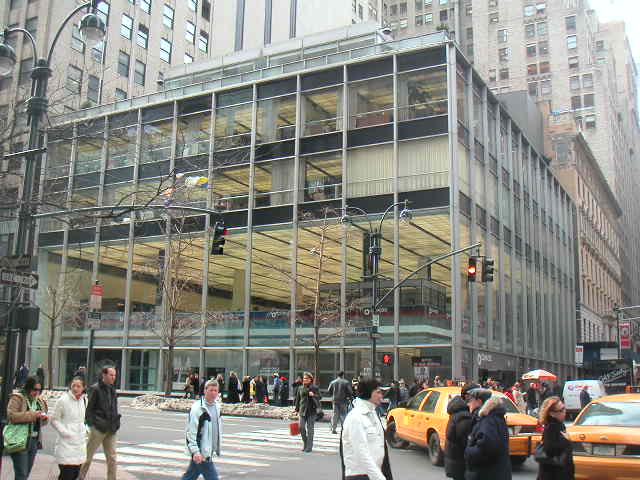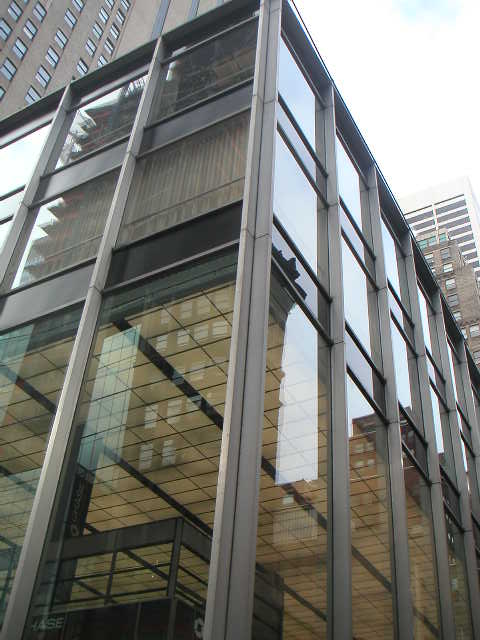 |
New York
Architecture Images- Midtown Manufacturers Trust Company |
|
architect |
Skidmore, Owings & Merrill LLP |
|
location |
510 Fifth Ave., at W43. |
|
date |
1954 |
|
style |
International Style I |
|
construction |
Developer: The Manufacturers Trust
Company. Glass-curtain-wall; clear, untinted, large windows, separated by very narrow, projecting aluminum mullions, and thin dark-green glass spandrels. |
|
type |
Bank |
|
|
 |
 |
|
|
images |
 |
|
" marks a revolution in bank
architecture where the impregnable gives way to the inviting." "Louis Skidmore was entirely responsible for bringing this major commission to us. Hap Flanigan, chairman of the board of the Manufacturers Trust, was an old friend, and he brought us to the site..., nearly at the epicenter of prestige of upper Manhattan. Skid, sensing the opportunity for a masterpiece, conceived the idea of a competition among our young and eager designers. Here was an opportunity to shake up the conventional architects' approaches to banking. They were encouraged to come up with whatever popped into their heads, and the history and tradition of banking be damned. Charles Evans Hughes III, grandson of the jurist, won hands down. His four-story, glass-walled bank, an apartment and a garden on the roof, featured as the central drama of the scheme a great bank vault, traditional symbol of banking. With a circular many-layered door, fastened together with great glittering rivets and bolts, the gleaming polished-steel vault stood in full view of the public as the sculpture feature of the composition. It was the special creation of industrial designer Henry Dreyfuss. No other element of a bank is more complicated or complex, and, with its shining tooled steel, more beautiful. Other innovations followed, such as the brilliant t idea introduced by Gordon Bunshaft, of abstract sculptor Harry Bertoia's monumental metal screen running the entire length of the second-floor banking level. Gordon Bunshaft devised one of the finest spaces conceived by man since Santa Sophia, particularly in the subtle spacing of columns, making them either disappear or gain prominence in the design. Mike Rapuano, my classmate at Cornell in landscape architecture, designed a beautiful park on the penthouse roof. The final result was the creation of a noble space with a noble park on top. Lewis Mumford called the glass bank a lantern, and surprised us all by relating the design to the Victorians and to the eighteenth century dreams of all glass cities. Mumford spun a glamorous and exciting aura around Skid's bank and suggested facets of creative genius of which neither Skid, Hughes, or Bunshaft had ever dreamed." Nathaniel Alexander Owings, "The Spaces In Between: An Architect's Journey," (Houghton Mifflin Company, 1973). |
|